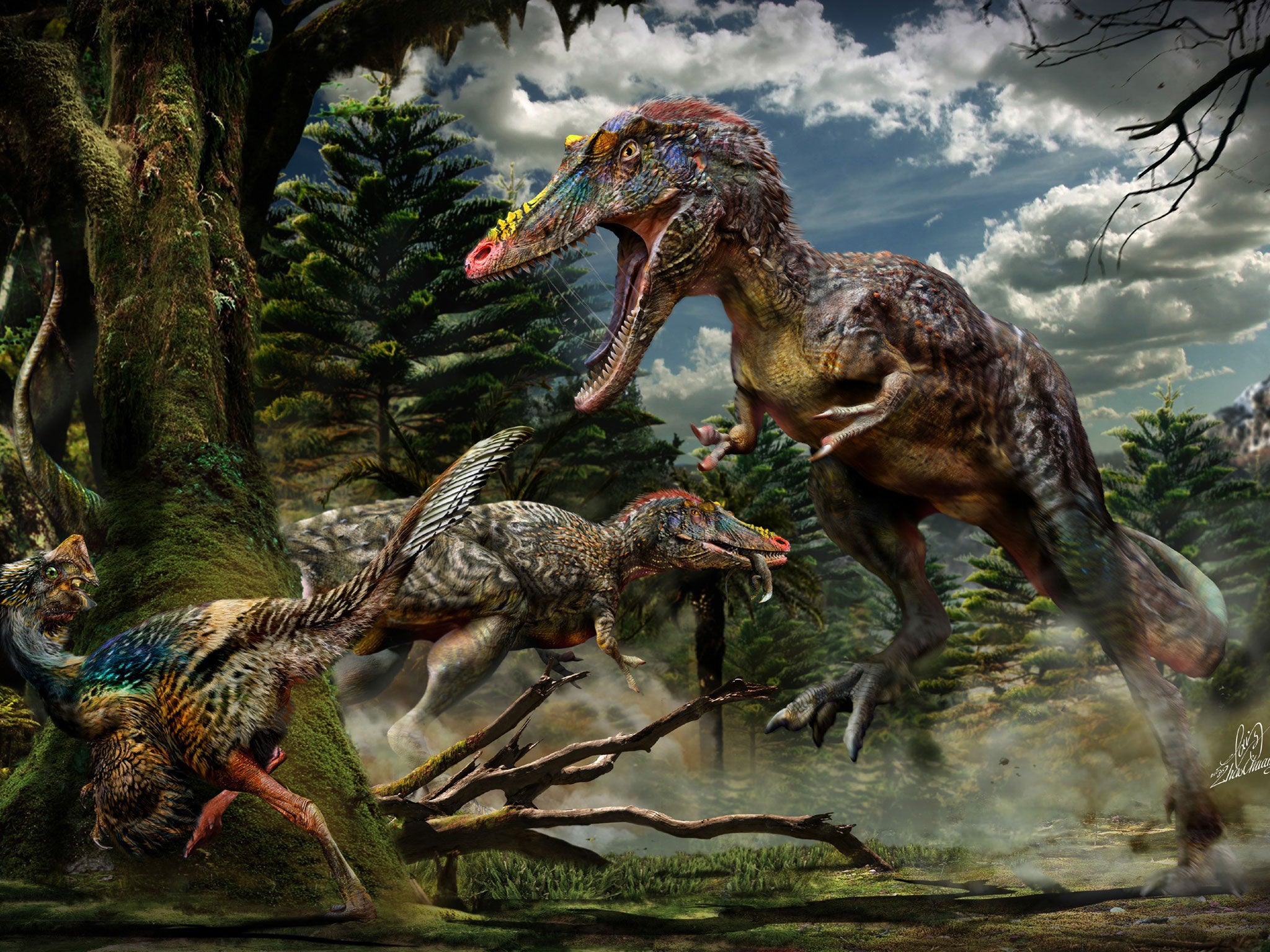Remains of 'Pinocchio rex' dinosaur unearthed
The bones were discovered by builders working on a construction site near the city of Ganzhou in southern China

Your support helps us to tell the story
From reproductive rights to climate change to Big Tech, The Independent is on the ground when the story is developing. Whether it's investigating the financials of Elon Musk's pro-Trump PAC or producing our latest documentary, 'The A Word', which shines a light on the American women fighting for reproductive rights, we know how important it is to parse out the facts from the messaging.
At such a critical moment in US history, we need reporters on the ground. Your donation allows us to keep sending journalists to speak to both sides of the story.
The Independent is trusted by Americans across the entire political spectrum. And unlike many other quality news outlets, we choose not to lock Americans out of our reporting and analysis with paywalls. We believe quality journalism should be available to everyone, paid for by those who can afford it.
Your support makes all the difference.The remains of a new type of Tyrannosaur with a very long nose have been unearthed leading the animal to be nicknamed "Pinocchio rex".
The bones were discovered by builders working on a construction site near the city of Ganzhou in southern China.
Researchers believe the animal, which stalked the Earth more than 66 million years ago, was a fearsome carnivore that lived in Asia during the late Cretaceous period.
The bones were discovered by workmen on a construction site who took them to a local museum.
Experts from the Chinese Academy of Geological Sciences and the University of Edinburgh then became involved in examining the remains.
With an elongated skull and long, narrow teeth, the newly-found predator would have looked very different from a T.rex, which had thick teeth and more powerful jaws.
Palaeontologists had been uncertain about the existence of long-snouted tyrannosaurs until the remains of the dinosaur - whose proper name is Qianzhousaurus sinensis - were unearthed in southern China.
Before that point, just two fossilised tyrannosaurs with elongated heads had been found, but since they were juveniles it was unclear whether they were from a new class of dinosaur or if they were simply at an early growth stage.
Experts at the University of Edinburgh said the new specimen is of an animal nearing adulthood. It was found largely intact and "remarkably well preserved".
It is thought that Qianzhousaurus sinensis lived alongside other tyrannosaurs but would not have been in direct competition with them, since they probably hunted different prey.
One of the authors of the study, Dr Steve Brusatte of Edinburgh University's School of GeoSciences, said: "This is a different breed of tyrannosaur. It has the familiar toothy grin of T. rex, but its snout was much longer and it had a row of horns on its nose.
"It might have looked a little comical, but it would have been as deadly as any other tyrannosaur, and maybe even a little faster and stealthier."
He added: "It is an awesome specimen, almost a complete skeleton. It is a really one in a million find that those workers made."
Following the discovery, researchers have created a new branch of the tyrannosaur family for specimens with very long snouts, and they expect more dinosaurs to be added to the group as excavations in Asia continue to identify new species.
Professor Junchang Lu, of the Institute of Geology, Chinese Academy of Geological Sciences, said: "The new discovery is very important. Along with Alioramus from Mongolia, it shows that the long-snouted tyrannosaurids were widely distributed in Asia.
"Although we are only starting to learn about them, the long-snouted tyrannosaurs were apparently one of the main groups of predatory dinosaurs in Asia."
Details of the study, funded by the Natural Science Foundation of China and the National Science Foundation, are published in the journal Nature Communications.
Additional reporting by PA
Join our commenting forum
Join thought-provoking conversations, follow other Independent readers and see their replies
Comments